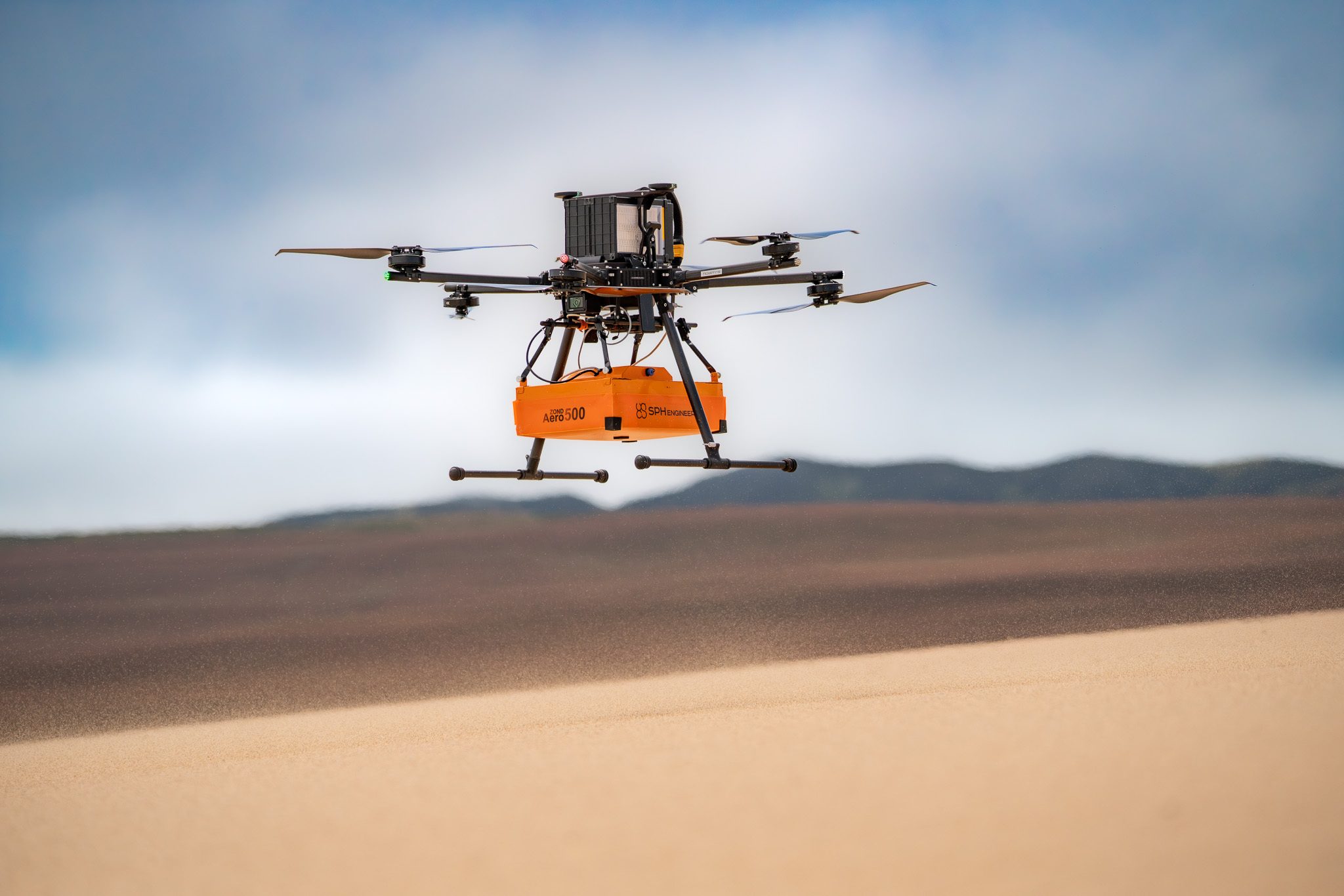Don’t Get Grounded: The Necessity of Multi-Platform Software for Drone Operations
Imagine managing a drone team surveying an expansive oil pipeline in Siberia. Suddenly, your DJI Matrice 300 malfunctions, and your only alternative is an American-built Freefly. You are far from cell service, under tight deadlines, and stress is palpable. Are you confident your flight plans, data pipeline, and risk management tools will function reliably with any drone you choose from the case? If not, it may be your software, not your creativity, holding you back.
Welcome to the evolving drone industry, where multi-platform software goes beyond being desirable; it’s essential for staying operational, competitive, and sane.
The Market Reality: Adapting to Mixed Fleets
In recent years, “drone operations” often equated to “DJI operations.” However, circumstances have changed. With rising security concerns, potential regional bans, supply chain disruptions, and a surge in innovative non-DJI hardware, operators—from public safety to the energy sector—are adopting mixed fleets out of necessity.
Diverse fleets are the new norm:
- Agencies are incorporating Autel and Freefly drones along with their trusted DJIs.
- Operators are deploying open-source platforms like Ardupilot or PX4 for specific tasks.
- Regulatory and security changes, such as a potential US DJI ban, necessitate planning for diverse hardware as a necessity.
“Few operators today can afford to maintain DJI-only fleets. Both public agencies and private enterprises are shifting to mixed fleets—not by choice, but out of need. Multi-platform software transforms this complexity into a manageable solution.”
Defining Multi-Platform in 2025
Let’s break down the jargon. Multi-platform drone software isn’t just a tool that connects with multiple drone brands. Genuine multi-platform tools offer:
- Integrated mission planning: Seamlessly design a survey for a DJI, then execute the same mission with an Autel or Freefly without starting over.
- Consistent user interface: Pilots transition between hardware without relearning fundamental controls.
- Standardized data output: Imagery and telemetry files are uniform, regardless of which drone is used.
- Multi-drone, multi-brand coordination: Monitor and direct flights from different manufacturers through a single dashboard.
- Offline and remote operation: Cache maps and elevation data for fully disconnected environments—no 4G required.
Why Former Systems Fall Short
Using DJI Pilot 2 or Flight Hub restricts you to DJI hardware. QGroundControl is fantastic for open-source drones if you’re fluent in technical jargon and content with outdated interfaces. Browser-only tools fail the moment you lose internet connectivity, rendering them ineffective in remote locations.
The High Stakes: Ensuring Business Continuity
1. Safeguarding Investments
Training, mission planning, and data management entail significant expenses. Continuous retraining or rebuilding workflows with each drone purchase equates to starting a new airline with every new aircraft.
- Reduced training costs: With a common interface, pilots rapidly adapt, even as fleets diversify.
- Protection of mission intellectual property: Reusable flight plans and procedures are not vendor-specific.
2. Safety and Compliance: No Room for Error
In critical infrastructure, public safety, or agriculture, mistakes due to software confusion or loss of mapping data can be disastrous.
- Consistent risk management: Standardized tools enforce safety checklists and adapt to evolving BVLOS regulations.
- Automatic no-fly zones: Tools like UgCS manage airspace proactively across hardware.
3. Efficiency and Scaling
The drone industry is advancing towards automation, AI, and large-scale BVLOS operations. Standardizing digital workflows simplifies scaling, whether managing five drones or fifty across multiple locations.
Key Advantages of Multi-Platform Software
| Feature | Single-Brand Software | True Multi-Platform Software |
|---|---|---|
| Hardware Support | One or two brands | All major and emerging brands |
| Mission Planning Reusability | Only within one hardware ecosystem | Across all supported drones |
| Pilot Training | Re-training required per OEM | Universal interface |
| Data Format | Proprietary, varies by brand | Standardized output |
| Offline Capability | Limited or none (cloud-dependent) | Full offline mission planning |
| Regulatory Adaptability | Slow, vendor-dependent | Rapid updates for new platforms |
| Cost of Fleet Diversification | High | Low |
Real-World Applications: Benefits of Multi-Platform Software
A. Public Safety
Agencies employing American-made drones for secure missions while using DJI hardware in other instances benefit from unified software for mission plans, response protocols, and forensic data, ensuring swift, compliant crisis responses.
B. Utility Inspection
Power companies combine Freeflys for LiDAR, DJI Mavics for photographic surveys, and custom Ardupilot builds for complex areas. Operators seamlessly transition between mission types without rebuilding plans or using new apps.
C. Agriculture
A farm using DJI for crop mapping trials the latest AgEagle UAV for long-range flights. Flight plans and terrain following remain consistent, with data integrating into a singular analytics system for precision farming.
The Future: Agility through BVLOS and AI
2024 opened new regulatory paths for BVLOS flights in the US and Europe, allowing drones to fly beyond sight for infrastructure and safety missions. This trend brings substantial value, provided software keeps up. Modern tools like UgCS enable 3D flight planning and manage maps and telemetry for autarky missions without internet.
Emerging trends include:
- AI Integration: For automated data analysis, predictive maintenance, and intelligent route planning.
- Edge Computing: Local data processing minimizes latency, critical for real-time BVLOS and disaster response.
- Cloud and IoT: Multi-platform software connects drones, sensors, and analytics for complex, connected operations.
Growth in the Drone Software Market
The global drone software market surged to $9.27 billion in 2024, with forecasts of reaching $16 billion in 2025 and potentially hitting $42.51 billion by 2029. This growth is driven by demands from construction, energy, logistics, and defense sectors.
“Unmanned drones are employed across various sectors, offering advantages like high-quality aerial imagery, enhancing navigation for defense, and creating 3D mapping of disaster zones.”
Selecting the Ideal Multi-Platform Software: Expert Advice
Pro Checklist:
- Ensure support for all current and upcoming drone models (DJI, Autel, Freefly, Parrot, Ardupilot, etc.).
- Demand genuine offline functionalities for remote operations.
- Assess interface usability with field teams for minimized training.
- Standardized outputs compatible with analytics, GIS, or compliance tools.
- Seek advanced mission planning, including 3D terrain following and real-time telemetry.
- Examine vendor support, updates, and community engagement.
Testimonials: What Clients Say
“Adopting a multi-platform system transitioned us smoothly from DJI to domestic drones—substantially saving time, and our pilots felt empowered immediately.”
“Operating in a connectivity-void wildfire zone, offline planning was indispensable. We wouldn’t manage without it relying on a Wi-Fi-dependent solution.”
“The future is BVLOS. Regulatory approvals demanded precise control unachievable by single-brand apps.”
Drones in Pop Culture
Recall the Watch Dogs game series, where you could commandeer any drone? Today’s multi-platform software parallels that power—though for productive purposes.
In Eye in the Sky, the mission success hinged on agile drone switching; equipped with multi-brand tools, it would have been completed before the tension peaked.
Our Human-Centric Approach
Our team is composed of drone pilots, geospatial enthusiasts, and experienced engineers focused on optimizing field operations. We assist oil companies in fleet transitions, guide first responders on BVLOS best practices, and face challenges head-on to ensure seamless operations.
Conclusion: Propel Your Drone Operations
The era of drones is rapidly advancing. Hardware mixes will diversify, regulations will change, and missions will grow increasingly complex. However, what should not change is your capability to manage and trust every aspect of your operations confidently.
In 2025 and beyond, multi-platform software goes beyond serving as a safeguard; it’s the foundation for innovative drone programs. Stay adaptable, competitive, and, most importantly, ensure continuous operation.
Considering multi-platform software for your fleet? Connect with us—our team is ready to keep your operations airborne, regardless of future trends.













